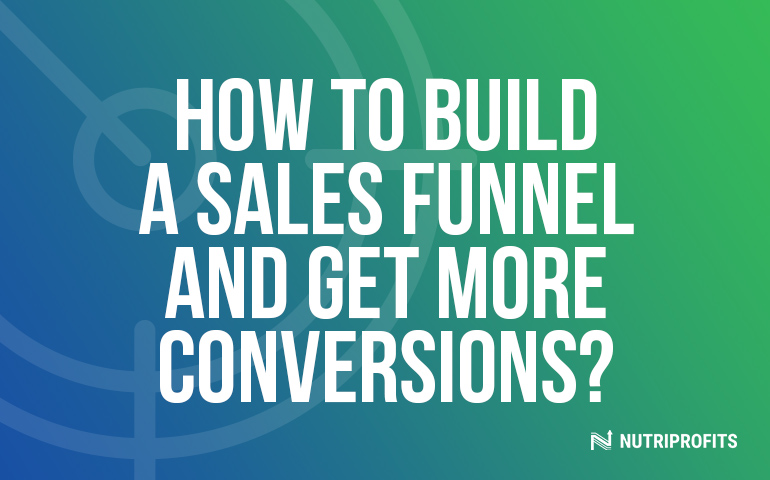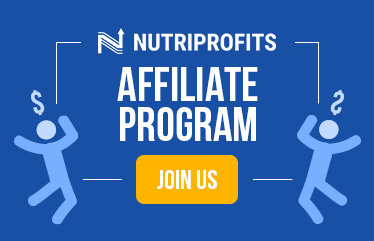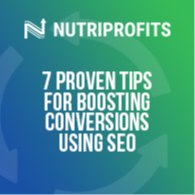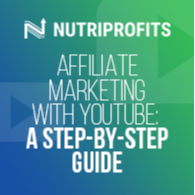The thing any affiliate marketer wants more than anything is a conversion, which makes them money. However, there needs to be a way for the affiliate marketer’s consumers to get to said marketer’s website and make a sale, which gives the marketer a conversion.
That’s where a sales funnel comes in. Sales funnels are a simple way to get consumers moving from one step to another until they buy something from the affiliate marketer’s website. So, how does someone build a sales funnel and get more conversions?
In this article, the affiliate marketer will learn what a sales funnel is and its stages, why having one is essential, and how to build one and make more conversions.
What Are Sales Funnels?
For those who don’t know what a sales funnel is, it’s a marketing concept mapping out the consumer’s journey through a sale. The sales funnel is a standard model among affiliate marketers because many consumers begin at the top, but few ever get to the bottom and buy something.
Depending on which model the affiliate marketer uses, a sales funnel has many sales–the top, the middle, and the bottom. Most affiliate marketers use this model to guide their B2C marketing efforts in each stage. When consumers go through each funnel stage, they signal an intense commitment to purchasing.
Sales Funnel Stages
A stage funnel has four main stages: awareness, interest, desire, and action. Consumers may go through only one stage or all four stages. This will depend on the affiliate marketer’s buying personas, niche, and the type of products and services the marketer sells.
Affiliate marketers must have a clear business vision, develop a marketing strategy, and define their target audience before building their sales funnels.
Awareness is a sales funnel’s first step. This is where consumers become aware of the affiliate marketer’s products and services (if that isn’t obvious enough). Consumers may be aware of whatever problem they need to solve and how to solve it.
That’s where the affiliate marketer comes in. Consumers may hear about the marketer via an ad, a blog post, a colleague, or a search engine result.
Awareness will lead to interest. Once consumers hear about the affiliate marketer’s brand, they may want to learn more.
These consumers are looking for solutions to their problems, thinking about them and the solutions to solve them. They may search on search engines and find the affiliate marketer’s website.
Consumers will also develop an interest in the affiliate marketer’s products via ebooks, email campaigns, webinars, and white papers.
This interest will lead to desire. This is where consumers know more about the affiliate marketer and what that marketer is all about. Consumers will learn more about the marketer’s products, like prices and packaging options.
When making decisions, calls, sales pages, and webinars are excellent for helping consumers in this stage. When consumers desire, they’re more likely to go to the most critical stage of the funnel–action. This stage is crucial for whether a consumer buys the affiliate marketer’s product.
If the consumer doesn’t buy any of the marketer’s products, that doesn’t mean the deal is gone forever. That consumer may come back and make a sale. If the consumer makes a sale, the affiliate marketer has gotten a conversion. It’s a win-win scenario for everyone involved!
These four stages are crucial for a sales funnel, but the affiliate marketer must consider them if they want repeat consumers. Losing customers will be bad for that marketer’s business because it’ll mean fewer conversions.
It’s vital to keep consumers happy. Affiliate marketers can make repeat consumers by creating nurture campaigns to stay on top of the consumers’ minds in case of future needs. That way, they’ll be more likely to buy more of the affiliate marketer’s products and tell others about the marketer’s brand, thus starting the funnel stages over again and getting more conversions.
Some ways the affiliate marketer can keep their consumers engaged and interested are:
- Customer feedback forms
- Emails
- Product usage guides
- Special offers
- Surveys and other follow-ups
- Technical assistance literature
Why Do You Need a Sales Funnel?
A sales funnel is beneficial for many reasons. The affiliate marketer can profit from their products and services when used effectively.
The first benefit is a focused marketing strategy. Consumers can contact the affiliate marketer during their journey. That’s why marketers must align their sales and marketing efforts for consumers to receive needed information. With an effective sales funnel, the marketer can deliver offers outside sales conversations, sending the message at the right time.
Sales funnels can also improve forecast accuracy by predicting the affiliate marketer’s future revenue. The marketer can calculate the percentage of expected conversions and multiply by the total estimated deal size using metrics from the awareness to action stages.
When using a sales funnel, the affiliate marketer saves time and effort. That’s because the marketer can create content once that’s curated for every sales funnel stage. The marketer can make a blog post addressing a pain point and diffusing it among consumers in the awareness stage. Marketers can also create strategic lead magnets offering leads on the desire stage.
The most significant benefit of a sales funnel is increased profit. Nurtured leads have 47% more sales compared to non-nurtured leads. Of course, it helps if the affiliate marketer optimizes their sales funnel.
How to Implement Sales Funnels
Now that the affiliate marketer knows what sales funnels are and their stages and benefits, it’s time to discuss how to implement them.
The first step is to gather data and understand the consumers. The affiliate marketer can do this by talking to them. Not everything is appealing to everyone. That’s why it’s crucial to fit the sales funnel to the consumers who are most likely to be interested in whatever product the marketer is selling.
What are the consumers’ fears, frustrations, and goals? What have they done to solve their problems? Did they work? These questions and more will help the affiliate marketer collect more data on their consumers and better create content for their sales funnel. The more data the marketer collects, the better the sales funnel.
The second step is to capture consumers’ attention. That’s the only way a sales funnel will ever work. No consumer means no interest, meaning no sales funnel and no conversion.
The affiliate marketer must put their content in front of their target audience. They can hire an agency specializing in content marketing, like an SEO company. When hiring an SEO company, that company will take the organic route and post diverse content across every platform the marketer has. Some forms of organic traffic are:
- Direct traffic (consumers who know about the marketer’s brand and have visited their website before)
- Referral traffic (other sites linking to the marketer)
- SEO
- Social media traffic (non-paid)
The affiliate marketer can also make different types of content like flipbooks, infographics, social media posts, videos, and more. Furthermore, the marketer can add forums and popups to their website to capture leads. They can also run ads or prospects manually.
The ideal places for the affiliate marketer to run their campaigns depend on where their consumers hang out. For example, those interested in B2B will hang out on LinkedIn. It also helps to do A/B testing.
The third stage is to build a landing page. Despite landing pages being the least-liked sign-up forms, they have the highest conversion rates–24%! Landing pages are also excellent for leading consumers there via ads.
A landing page should tell consumers who the affiliate marketer is and what they’re about. A landing page should also have forms for consumers to enter their information and a bold call to action. To impress consumers, it’s best to focus on capturing them instead of pushing sales.
When the affiliate marketer has captured their consumers via a landing page, they should make an email campaign to communicate. Effective email campaigns educate their consumers rather than promote content. Ultimately, the marketer should make an offer consumers can’t refuse.
What do the consumers want to learn? What obstacles will the affiliate marketer need to overcome to make a conversion? These questions will influence consumers to make a sale.
The fourth step is to upsell, cross-sell, and downsell. When consumers have bought a product or are ready to buy something, the affiliate marketer should influence them to buy more. The marketer can cross-sell by promoting complementary products to products the consumer has already bought.
The consumer may hesitate to accept these offers, but the affiliate marketer can downgrade their offers and make them more acceptable.
The final and most crucial step is to offer something valuable. When the affiliate marketer offers something consumers want, those consumers will buy that valuable thing.
That’s when the affiliate marketer should nurture their consumers by initiating meaningful interactions. The marketer can also make content to help consumers understand their products, like case studies, checklists, ebooks, how-to guides, and surveys.
It helps the affiliate marketer to repeat these steps to optimize their sales funnel and get more conversions.
Conclusion
The thing any affiliate marketer wants more than anything is a conversion, which makes them money. That’s where a sales funnel comes in. When the affiliate marketer learns what a sales funnel is, its stages and benefits, and how to implement one, they’re guaranteed to get more conversions.





.jpg)

-1-1.jpg)